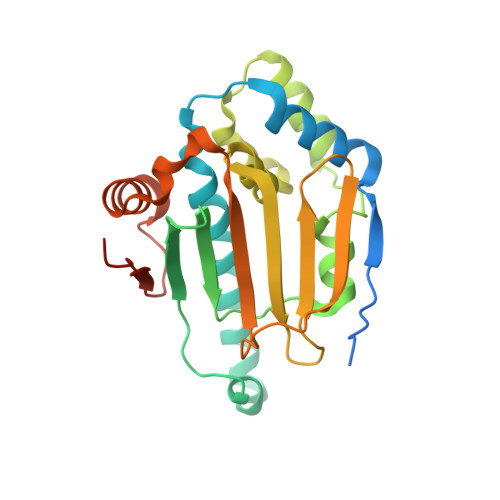Fragment-Based Drug Discovery Applied to Hsp90. Discovery of Two Lead Series with High Ligand Efficiency.
Murray, C.W., Carr, M.G., Callaghan, O., Chessari, G., Congreve, M., Cowan, S., Coyle, J.E., Downham, R., Figueroa, E., Frederickson, M., Graham, B., Mcmenamin, R., O'Brien, M.A., Patel, S., Phillips, T.R., Williams, G., Woodhead, A.J., Woolford, A.J.A.(2010) J Med Chem 53: 5942
- PubMed: 20718493
- DOI: https://doi.org/10.1021/jm100059d
- Primary Citation of Related Structures:
2XDK, 2XDL, 2XDS, 2XDU, 2XDX, 2XHR, 2XHT, 2XHX, 2XK2 - PubMed Abstract:
Inhibitors of the chaperone Hsp90 are potentially useful as chemotherapeutic agents in cancer. This paper describes an application of fragment screening to Hsp90 using a combination of NMR and high throughput X-ray crystallography. The screening identified an aminopyrimidine with affinity in the high micromolar range and subsequent structure-based design allowed its optimization into a low nanomolar series with good ligand efficiency. A phenolic chemotype was also identified in fragment screening and was found to bind with affinity close to 1 mM. This fragment was optimized using structure based design into a resorcinol lead which has subnanomolar affinity for Hsp90, excellent cell potency, and good ligand efficiency. This fragment to lead campaign improved affinity for Hsp90 by over 1,000,000-fold with the addition of only six heavy atoms. The companion paper (DOI: 10.1021/jm100060b) describes how the resorcinol lead was optimized into a compound that is now in clinical trials for the treatment of cancer.
Organizational Affiliation:
Astex Therapeutics, Ltd., 436 Cambridge Science Park, Milton Road, Cambridge CB4 0QA, UK. c.murray@astex-therapeutics.com















